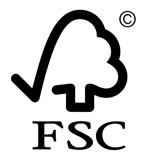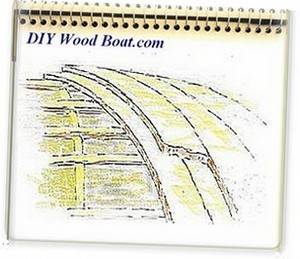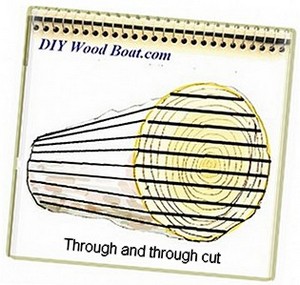- Home
- Boat Building
- Restoration
- Timber
- Timber Properties
- Sustainable Wood
Sustainable Wood for Boat Building
Wood is without doubt is one of the most beautiful, versatile, and on the face of it the most environmentally friendly of materials for constructing boats.
However, like many green issues today it is a complex one.
Why Should We Care?
Timber
which has been harvested from sustainably managed forests is durable,
can be
recycled and requires a minimum of energy to produce.
And it has properties
which make it one of the most superb building materials known to man.
However un-sustainably harvested lumber can be an ecological disaster.
It is in the interests of everyone on this planet to make sure, wherever possible that the wood and wood products that you buy and use are sustainably produced.
Apart from it now being ‘trendy’ to be eco friendly, surely just by using wood should be enough to satisfy the green instincts?
Surely timber is renewable because it is constantly growing?
Because it is a good insulator it will help to reduce our energy usage?
And surely it can be disposed of, or recycled at the end of its useful life without detriment to the environment?
So, why should you want to getting involved in the process of specifying that it comes from well managed forests?
Wood can without a doubt be one the most environmentally friendly building material on earth but It can also be one of the worst.
One of the worst offenders can be wood logged in tropical rainforests.
These forests are home to around half of the world's species and an equal proportion of the carbon locked up in the world’s ecosystems.
When wood rots or is burned greenhouse gases are released.
Growing trees act as carbon sinks that absorb these gases.
Buying the wrong kind of lumber can contribute to the destruction of tropical rainforests.
Forests.
So, how you can help forests?
By choosing or even just asking for sustainably harvested timber will have a positive impact on the conservation and the good management of forests from which timber is being extracted.
One of the main causes of forest destruction is illegal logging.
This is fed by high demand for timber in Europe and in countries such as Japan, the United States and China.
Unfortunately it would seem that even when illegally sourced timber is identified, it is not necessarily illegal to import it.
It has been suggested that as much as 90% of tropical timber being imported into Europe may come from unsustainable sources.
The forests which once spread over half the earth now cover only a quarter of the planet's land surface.
This resource is not finite.
Not only is this destruction reducing the source of one of the best building materials but it is also having a dramatic effect on biodiversity generally.
Besides the many species that rely on the trees there are communities of humans who rely on their forests socially, economically and spiritually.
Recycled Lumber.
All trees draw CO2 from the atmosphere as they grow and oxygen is released back into the air.
Wood is largely made of greenhouse gas extracted from the air.
So, long-lasting timber products can be described as super-green.
However, if getting the lumber involves clearing forests without replacing them, then the overall impact can be a huge negative.
The CO2 that was previously locked up in soils and foliage is released into the atmosphere as the total area of carbon-absorbing forest is reduced.
So, perhaps the greenest option is to use reclaimed (salvaged) wood, there is plenty to be had if you look for it.
While it can be almost as expensive as new timber it is often be more attractive and will be well seasoned.
By buying recycled timber you will help reduce deforestation and that carbon will remain locked in.
Locally Sourced Wood.
In the event that you cannot find suitable recycled timber, try to use locally sourced wood.
First it won’t have had to be transported half way around the world using up precious energy.
And depending where you live, it is likely that the local forestry is tightly controlled.
Using indigenous lumber will also help ensure that your own local forests are sustained.
So, what is Sustainability?
Sustainability is one of those emotive buzz words which often obscure the complexities of the problem.
It is a mistake to think that, by using timber instead of certain other construction materials, enough is being done for the environment already.
If forests are being destroyed as a result of its production, it can hardly be described as being environmentally friendly.
And it is very difficult to prove where lumber actually comes from because the supply chain from forest to end user is often very complicated.
Deforestation also presents a massive threat to biodiversity.
From what I as a lay-man can ascertain there is still no definitive method for measuring sustainability.
However, as far as I can see timber, which is selectively felled allowing room and light to get to surrounding trees and milled on small portable mills close to where they fall has to minimize damage to surrounding vegetation.
And when then carried out by hand or on small vehicles on smaller roads will cause much less disturbance to the rest of the forest than the operations which clear and fell acres and acres of forest, use skidders and loaders and large trucks which then travel on large and invasive roads to the mills.
And that is without mentioning the burning and clearing of the remaining scrub.
The US Forestry Service provides a free internet resource detailing a vast amount of their research into wood and fiber utilization, the conservation and productivity of forests and their contribution to the economy, and quality of life.
‘Green Labels’.
OK, its a marketing fact that If we all stop buying timber that comes from forests that are badly managed, or even perhaps that has been illegally produced, then the suppliers will have no choice but to change as well.
But how can we consumers choose timber without harming the environment?
We are all increasingly aware how those 'green' labels on everything we buy are often suspect.
And more and more customers are loosing confidence in schemes based on government led standards.
A three-year study of timber companies by the WWF entitled ‘Truth or Trickery?’ revealed a confusing proliferation of self-appointed ‘green’ logos and certificates issued by trade bodies and the like which were more interested in self promotion than environmental issues.
So, where does that leave us consumers?
Forest Stewardship Council.

From the limited amount of research that I as a simple minded consumer have been able to do, the most reliable environmentally friendly timber label would seem to be that of the’ Forest Stewardship Council’ (FSC).
While I doubt if any means of certification is foolproof, at least the FSC is an independent, non-governmental, not for profit organisation.
The FSC was founded in 1993 by the World Wide Fund for Nature and other groups to promote the responsible management of the world’s forests.
The FSC is the only forest certification system which is supported by all major environmental groups as well as organisations such as the US and the Australian green building council.
As well as stringent environmental principles, other criteria which must be satisfied if forests are to qualify for its label are;
- The prohibition of conversion of natural forests or other habitats.
- The prohibition of highly hazardous pesticides.
- The prohibition of the cultivation of genetically modified trees.
- The upholding of the rights of indigenous peoples.
- The promotion of good employment and health and safety practices.
- The inspection of each certified operation at least once a year, those found to no longer comply with the criteria will have the certificate withdrawn.
To find FSC wood products, look for the Logo, check out the FSC Certificate Search or contact the FSC office near you.
Previous posts
See What Others Have Posted
Sustainable Forestry Initiative introduces new standards
via Tom Haxby, Michigan State Forest certified to SFI – near Kalkaska, Michigan
Sustainable Forestry Initiative (SFI), the organization that certifies …












